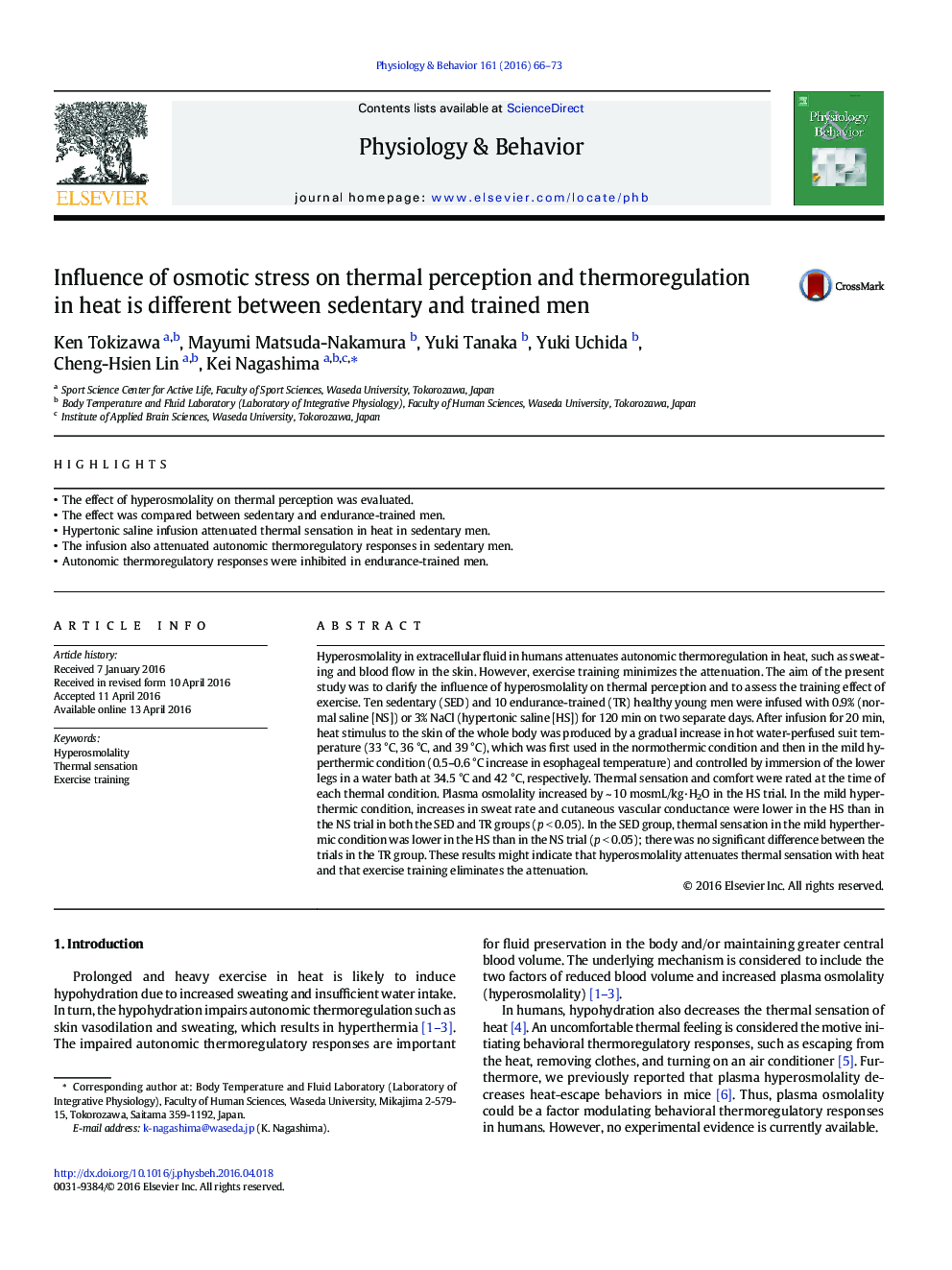| Article ID | Journal | Published Year | Pages | File Type |
|---|---|---|---|---|
| 2843875 | Physiology & Behavior | 2016 | 8 Pages |
•The effect of hyperosmolality on thermal perception was evaluated.•The effect was compared between sedentary and endurance-trained men.•Hypertonic saline infusion attenuated thermal sensation in heat in sedentary men.•The infusion also attenuated autonomic thermoregulatory responses in sedentary men.•Autonomic thermoregulatory responses were inhibited in endurance-trained men.
Hyperosmolality in extracellular fluid in humans attenuates autonomic thermoregulation in heat, such as sweating and blood flow in the skin. However, exercise training minimizes the attenuation. The aim of the present study was to clarify the influence of hyperosmolality on thermal perception and to assess the training effect of exercise. Ten sedentary (SED) and 10 endurance-trained (TR) healthy young men were infused with 0.9% (normal saline [NS]) or 3% NaCl (hypertonic saline [HS]) for 120 min on two separate days. After infusion for 20 min, heat stimulus to the skin of the whole body was produced by a gradual increase in hot water-perfused suit temperature (33 °C, 36 °C, and 39 °C), which was first used in the normothermic condition and then in the mild hyperthermic condition (0.5–0.6 °C increase in esophageal temperature) and controlled by immersion of the lower legs in a water bath at 34.5 °C and 42 °C, respectively. Thermal sensation and comfort were rated at the time of each thermal condition. Plasma osmolality increased by ~ 10 mosmL/kg·H2O in the HS trial. In the mild hyperthermic condition, increases in sweat rate and cutaneous vascular conductance were lower in the HS than in the NS trial in both the SED and TR groups (p < 0.05). In the SED group, thermal sensation in the mild hyperthermic condition was lower in the HS than in the NS trial (p < 0.05); there was no significant difference between the trials in the TR group. These results might indicate that hyperosmolality attenuates thermal sensation with heat and that exercise training eliminates the attenuation.
